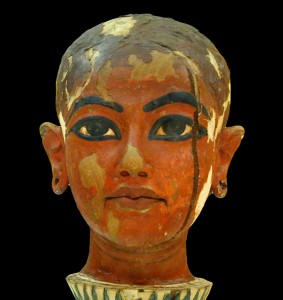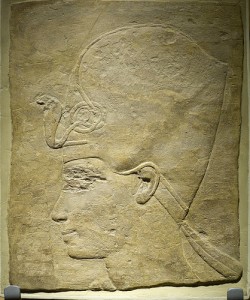 Sometime in the winter of 1907 and 1908, an American researcher found a curious assortment of objects lying in a small pit in the Valley of the Kings. Theodore Davis, like many Egyptologists of the day, was looking for large, grand things, preferably royal tombs. So when he and his workers dug up several jars filled with linen bandages, worn kerchiefs, broken pottery, splintered animal bones, bits of dried mud, and collars made of faded dried flowers, he immediately set them aside and resumed digging.
Sometime in the winter of 1907 and 1908, an American researcher found a curious assortment of objects lying in a small pit in the Valley of the Kings. Theodore Davis, like many Egyptologists of the day, was looking for large, grand things, preferably royal tombs. So when he and his workers dug up several jars filled with linen bandages, worn kerchiefs, broken pottery, splintered animal bones, bits of dried mud, and collars made of faded dried flowers, he immediately set them aside and resumed digging.
Davis thought he had found scraps from a poor man’s grave. In fact, he and his team had excavated all the leftovers from Tutankhamun’s spectacular funeral in 1323 B.C.
In Egyptology, as in life, one man’s loss is another man’s gain. Davis gave the jars and all their contents away in 1909 to the Metropolitan Museum of Art, and Herbert Winlock, the resident Egyptologist, finally got around to studying the finds three decades later. The bits of dried mud, he discovered, bore impressions left by a royal seal with Tutankhamun’s throne name. And someone had inked dates on some of the linens: these fell within Tutankhamun’s reign and ended the year he died. I can only imagine Herbert Winlock’s smile when he finally realized what the Met had in those obscure jars.
 The museum has now put several of the key finds on display in a new exhibit, Tutankhamun’s Funeral, and posted an online photo catalog of all the exhibit’s artifacts. This is worth checking out. As I clicked through it, I felt as if I was looking over Herbert Winlock’s shoulder. The objects, Winlock noted in his 1941 report, “were too impure to be buried in the tomb with the dead mean, but…had to be safely put not far from his body.”
The museum has now put several of the key finds on display in a new exhibit, Tutankhamun’s Funeral, and posted an online photo catalog of all the exhibit’s artifacts. This is worth checking out. As I clicked through it, I felt as if I was looking over Herbert Winlock’s shoulder. The objects, Winlock noted in his 1941 report, “were too impure to be buried in the tomb with the dead mean, but…had to be safely put not far from his body.”
Many of the finds were remnants from the embalmers’ craft. These were secretive men who worked in out of the way places. As priests, they chanted as they labored to make flesh immortal: as businessmen, they guarded their trade secrets carefully. I don’t think I’ve ever seen such a wonderfully preserved collection of embalmers’ gear, from the neatly woven linen bandages to the small handmade bags filled with natron or chaff. These were originally intended to be placed inside Tutankhamun’s eviscerated abdomen, to desiccate the cavity. Someone had made too many.
But I think that the real treasure of KV 54, as the small pit came to be known, was something very humble, very personal, something almost careless. It was a piece of linen that an embalmer used to wipe his fingers clean.
The linen still bears the prints of this man, who smoothed fragrant spices over Tutankhamun’s body, and kept the boy king’s last secrets.
________________
This was one of the first posts on LWON; it ran on May 26, 2010. We like it, you may not have seen it, so we run it again.
Upper Photo: Head of young Tutankhamun emerging from a lotus, evoking the rebirth of the king. Cairo Museum. Photo taken by Jean-Pierre Dalbera.
Lower Photo: Head of Tutankhamun, probably from Nubia, Egypt, New Kingdom, 18th Dynasty 0.1332 to 1322 BC., Limestone, 36.5 x 29 cm, inv. No: F 1935/3.1, National Museum of Antiquities, Leiden. Photo by Koopmanrob.
Hola,
Todo dinбmica y muy positiva! 🙂